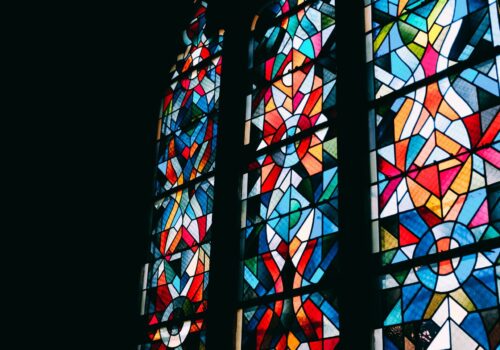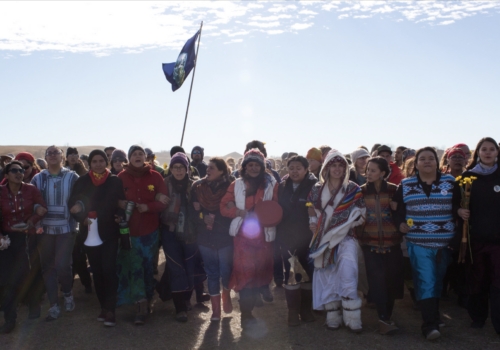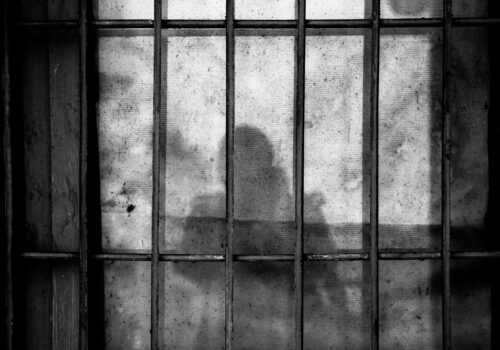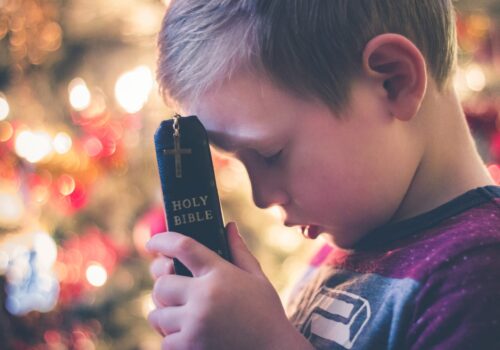From Tuesday, June 24 through Saturday, June 28, 2008, monks from Drepung Loseling Monastery in Atlanta created a Manjushri (Buddha of Wisdom) mandala in the atrium of the Emory University Math/Science Center during the International Association of Buddhist Studies (IABS) congress. Making a Mandala (35 minutes) is an ethnographic film in the mode of observational cinema about the bodily practices involved in painting that particular mandala in the Vajrayana tradition.
More
Still shots of the mandala creation process at the Mystical Arts of Tibet website.
Stages of sand mandala construction process, provided couresty of Drepung Loseling Monastery.
This film privileges the integrity of mandala-making practices, that is, how the monks do what they do and where and with whom as well as what they do. The monks work individually yet collaboratively as several hundred attendees of the IABS meeting and other passersby observe their progress. For the duration of the mandala creation, they work in close proximity to one another, but each is also involved in his own individual practice of deity yoga. Moreover, the film demon strates that secular spaces such as the Math/Science Center can also become sacred spaces and that some religious spaces are explicitly religious only in certain ways at certain times.Observational cinema is a particular genre of documentary film that in tentionally foregoes the use of common documentary devices such as interviews, talking-heads commentary, atmospheric mood music, and voice-of-God narration. In place of these, observational cinema seeks to follow the action rather than to direct it, to substitute detail for drama, and to allow film subjects to speak for themselves—or not to speak, as they choose—while they carry out their practices in a particular context. The sounds of observational cinema are the sounds created by and heard by the film’s subjects themselves. The scenes of observational cinema tend to be long and unbroken. The goal is to present lived human experience in a way that respects the context in which that experience takes place.
Making a Mandala explores the role of imagination in these practices by paying close attention to the physical work of the monks as they prepare for, create, and then dismantle the sacred sand painting. One of the reasons Tibetan Buddhists paint sand mandalas is that the work of painting is held to produce positive, transformative effects within the painters and, by extension, for the world. Although we cannot see the transformation that happens within the monks, we can see the visible results of their interior work as the mandala takes shape. We can then also imagine the extensive memory work involved in creating a mandala and the ways in which the mandala serves as a mnemonic device in practicing deity yoga. By attending to bodily practices, we can observe the ways in which the monks go about collaboratively painting a perfect cosmos by heart.
Films offer a series of suggestions rather than more conventional academic arguments. Among other things, Making a Mandala suggests that the labor- and time-intensive preparations before the mandala is begun and the long and detailed work of the monks in painting the mandala are themselves as much religious practices as the opening and closing ceremonies for the mandala. Sand mandalas are beautiful works of art and significant parts of Tibetan Buddhist culture, but in Vajrayana Buddhist teaching, the transformation of the makers is prized above the value of man dalas as works of art. This film pays new attention to the actual practices involved in making a mandala, allowing the sights and ambient sounds of mandala-creation to provide different understandings of what mandalas are and do, both for those who make them and those who watch them being made. It invites viewers to consider the sensuous aspects of mandala creation as exemplary of what Collette Piault has termed “the anthropology of living reality.”
Feature Image in Public Domain, CC0.






